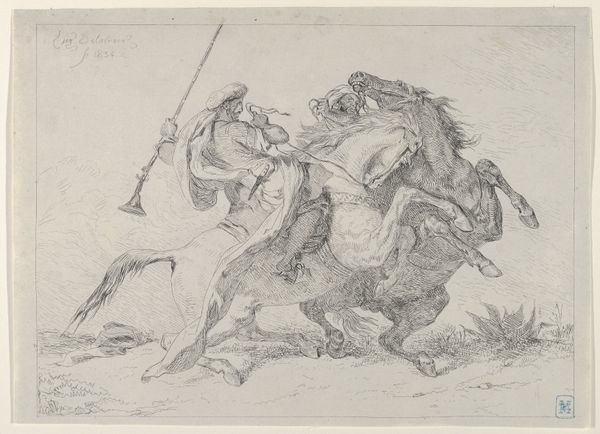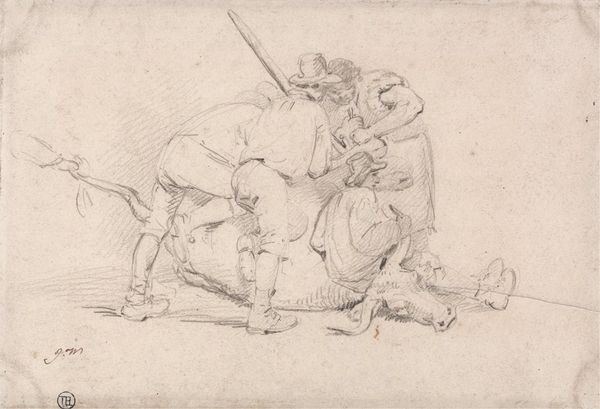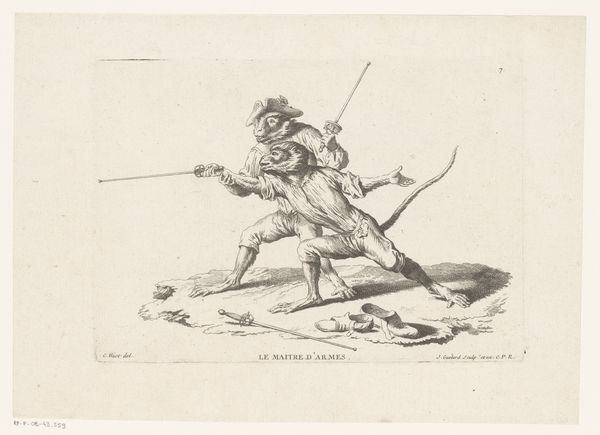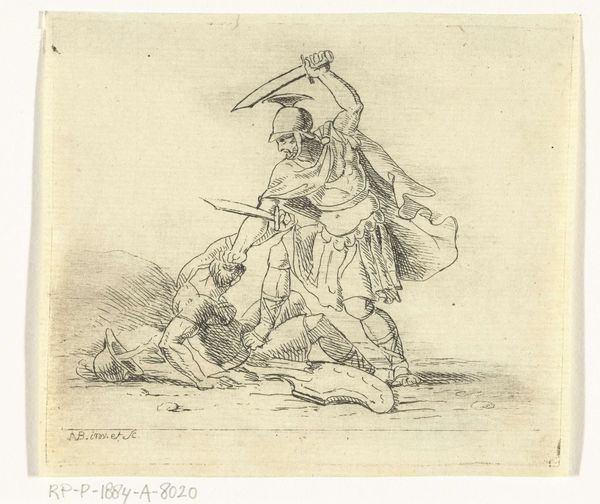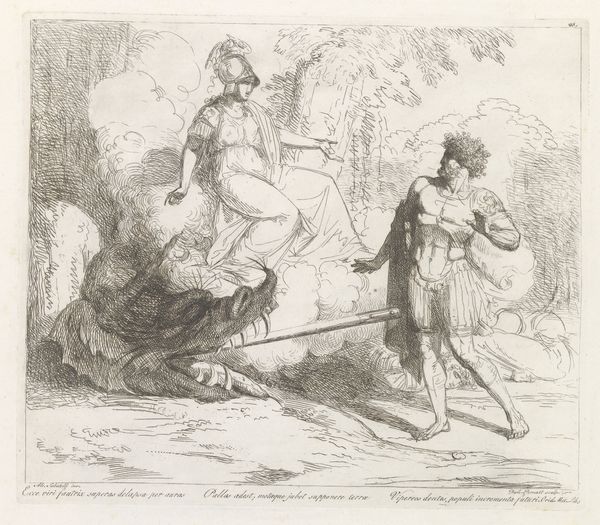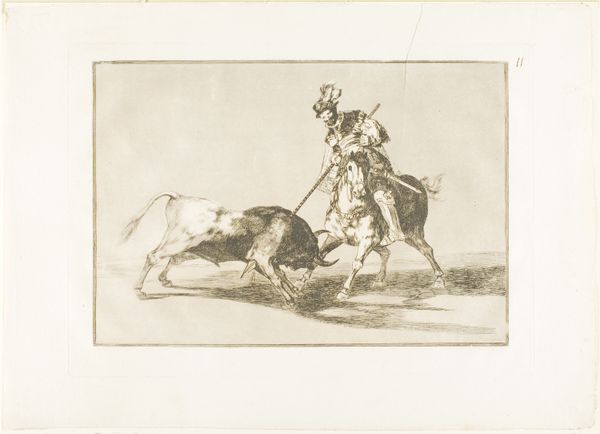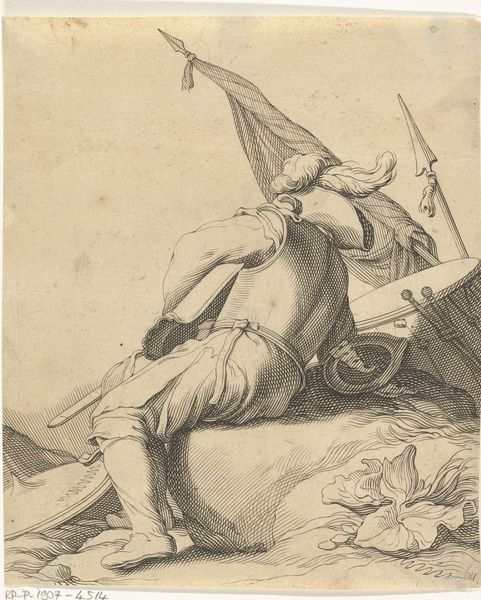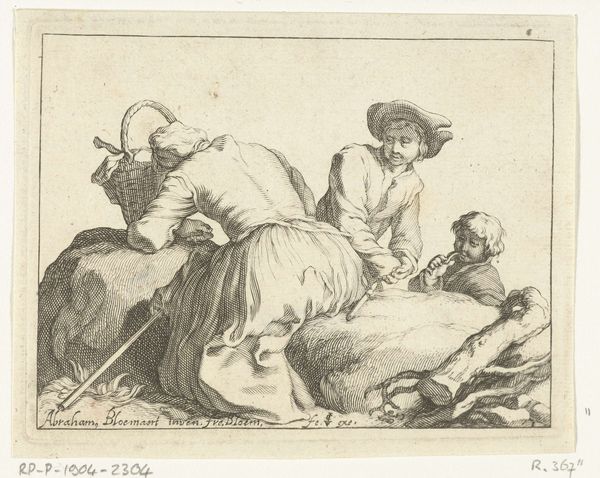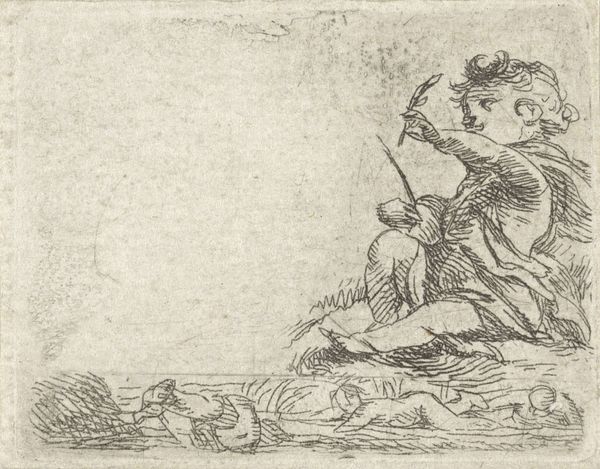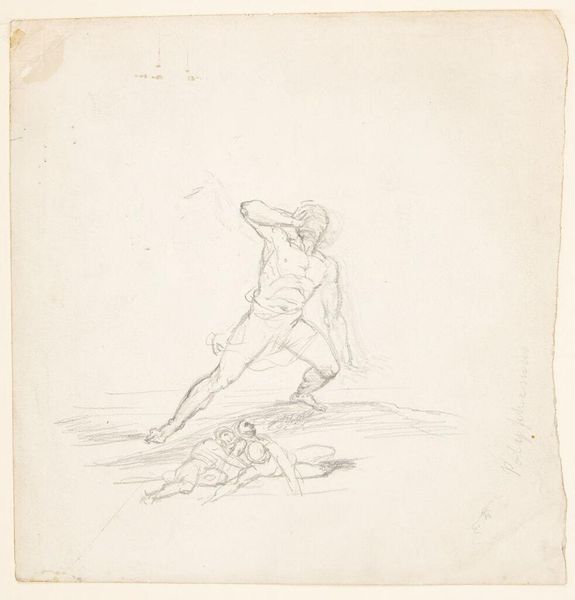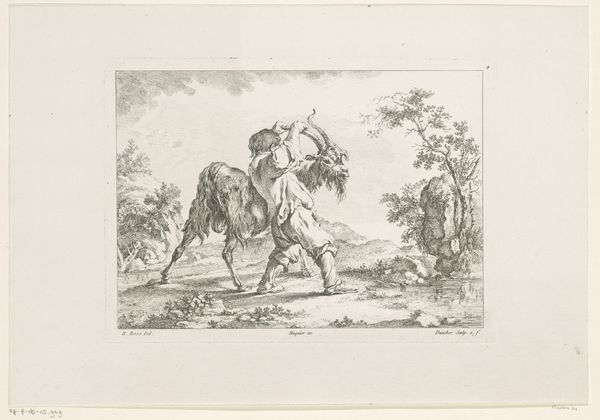
print, etching
#
narrative-art
#
baroque
# print
#
etching
#
figuration
#
genre-painting
Dimensions: height 119 mm, width 131 mm
Copyright: Rijks Museum: Open Domain
Curator: Today, we're looking at "Gewonde soldaat," or "Wounded Soldier," an etching made by Dirk Maas sometime between 1710 and 1717. It's currently held here at the Rijksmuseum. Editor: Immediately, I'm struck by the vulnerability depicted. The stark lines, the way the soldier is splayed out, it evokes a very strong sense of defeat. Curator: Yes, Maas uses line and composition quite purposefully. The figure's limbs create a fractured visual space, emphasizing the disarray. Notice how the etcher's mark, the linear structure itself, suggests the roughness of the field and amplifies the feeling of abandonment. Editor: It's fascinating how an etching, a fundamentally reproductive medium, becomes imbued with this rawness. Consider the physical act of etching the plate. The labor involved in creating these lines mirrors, in a way, the soldier's own struggle, the wear and tear on his body. The cheap reproductions might also symbolize how soldiers are carelessly treated by rulers in times of war. Curator: A compelling reading. The composition, in its almost baroque theatricality, invites such allegorical interpretation. It's a genre scene, yes, but elevated. The very deliberate placement of the limbs and the treatment of the light, however sparse, pulls the viewer into the figure's subjective space. Editor: Precisely. The way the body interacts with the implied ground beneath it–we can think about this print not only as an aesthetic object but as the end result of various processes and choices related to labor, cost, and intent. The materiality is essential to unpacking the artist's message here. Curator: I find it interesting that in a way Maas gives order and coherence to an otherwise disordered form by imbuing it with artistic sensibility. In other words, by representing something visually so challenging, the print resolves this scene on paper. Editor: And in its circulation, it participates in forming and perpetuating public understanding of conflict and perhaps valorizing sacrifice, which can influence further cycles of war. Thank you for emphasizing this reading, which highlights the interplay of artistic interpretation with materials and labor within the print and its impact within society.
Comments
No comments
Be the first to comment and join the conversation on the ultimate creative platform.
